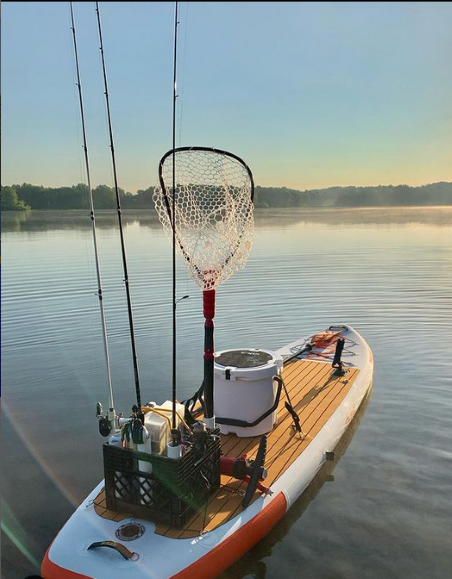Your Guide to Fishing in Texas: Master the Art of Angling in the Lone Star State!
Looking to go fishing in Texas? Our guide will provide you with all the information you need for a successful fishing adventure in the Lone Star State.
When it comes to fishing, Texas is a haven for anglers of all skill levels. With its vast and diverse waterways, this state offers a multitude of opportunities to cast your line and reel in impressive catches.
Texas: A Haven For Anglers Of All Skill Levels
Whether you’re an experienced angler searching for a new challenge or a beginner hoping to try your hand at fishing, Texas has something to offer everyone. From freshwater lakes to winding rivers and expansive coastal areas, the Lone Star State provides a thriving habitat for a wide variety of fish species.
For those looking for a bit of adventure, Texas boasts some of the best and most challenging fishing opportunities in the country. Cast your line into the depths of the Gulf of Mexico and test your skills against prize-worthy offshore species like marlin, snapper, and amberjack. Alternatively, you can explore the pristine waters of the Texas Hill Country and try your luck with trophy bass in renowned lakes like Lake Fork and Lake Amistad.
Locations For Spectacular Fishing Experiences In Texas
When it comes to fishing destinations, Texas does not disappoint. Exciting opportunities await anglers in various regions throughout the state, each with its own unique charm and abundant fish populations.
Check out the table below for a brief overview of some of the best fishing spots in Texas:
| Lake | Location | Notable Fish Species |
|---|---|---|
| Sam Rayburn Reservoir | East Texas | Largemouth Bass, Catfish, Crappie |
| Galveston Bay | Galveston | Redfish, Speckled Trout, Flounder |
| Padre Island National Seashore | Corpus Christi | Red Drum, Flounder, Sheepshead |
| Guadalupe River | Hill Country | Rainbow Trout, Smallmouth Bass, Guadalupe Bass |
No matter where you choose to cast your line in Texas, you can expect thrilling fishing experiences and the chance to reel in some impressive catches. With such a wide range of locations and fish species to target, the Lone Star State truly lives up to its reputation as a dream destination for anglers.
- Immerse yourself in the coastal beauty of Galveston Bay as you chase after redfish and speckled trout.
- Explore the quiet tranquility of the Guadalupe River and try your hand at catching rainbow trout.
- Or head out to the deep waters of Sam Rayburn Reservoir, where large-mouth bass lurk beneath the surface, ready to put up a fight.
With its diverse fishing locales and abundant aquatic life, Texas offers endless possibilities for memorable fishing trips. So grab your gear, get ready to cast a line, and embark on a fishing adventure in the unique and captivating waters of the Lone Star State.

Essential Fishing Gear For A Successful Trip
When it comes to fishing in Texas, having the right gear can make all the difference between a successful trip and going home empty-handed. Whether you are a beginner or an experienced angler, having the must-have fishing equipment for Texas waters can greatly enhance your chances of landing that trophy catch. In this guide, we will explore the key gear you need for a fruitful fishing adventure in the Lone Star State.
Must-have Fishing Equipment For Texas Waters
To ensure a productive day on the water, it’s essential to have the following gear in your fishing arsenal:
- Fishing Rod and Reel: Your fishing rod and reel are the foundation of your gear setup. When it comes to Texas fishing, it’s crucial to choose a rod and reel combo that can handle the diverse range of fish species found in the state’s waters.
- Fishing Line: Selecting the right fishing line is just as important as your rod and reel. For most Texas fishing scenarios, a high-quality monofilament or fluorocarbon line with a suitable pound test will provide the strength and sensitivity you need to tackle resilient fish.
- Fishing Hooks: Having a variety of fishing hooks in your tackle box is a must. From circle hooks for catch-and-release practices to treble hooks for live bait fishing, having the right hook size and type can improve your chances of hooking that prized fish.
- Bait and Lures: Texas offers a wide range of fishing opportunities, so having a selection of bait and lures is crucial. Natural baits like live worms or shrimp can entice freshwater and saltwater fish alike, while an assortment of artificial lures, such as crankbaits and soft plastics, can mimic the movements of different prey.
- Tackle Box: Keep your gear organized and easily accessible with a tackle box. Opt for a sturdy and waterproof model that can withstand the demands of Texas fishing, and ensure it has ample compartments to accommodate your hooks, lures, and additional equipment.
Choosing The Right Fishing Rod And Reel For Texas Fishing
When it comes to selecting a fishing rod and reel for Texas fishing, it’s crucial to consider the specific conditions and target species you’ll encounter. Here are a few key factors to keep in mind:
- Fishing Location: If you plan to fish in freshwater lakes or rivers, a medium to heavy-action rod with a spinning reel may be suitable for targeting larger species like bass or catfish. If you’re heading to the Gulf Coast for saltwater fishing, a medium to heavy-action casting rod paired with a saltwater-specific reel will be better equipped to handle the larger and more aggressive saltwater species.
- Target Species: Different fish species have varying behaviors and preferences, which influence the rod and reel combo you should choose. For example, if you’re targeting trout in the Texas Hill Country, a lightweight spinning rod with a fast action would be ideal. Alternatively, for offshore fishing targeting big-game fish like tuna or marlin, a heavy-duty rod and reel combo designed for saltwater trolling is essential.
- Personal Preference: Ultimately, the best fishing rod and reel combo for Texas fishing will depend on your personal preferences and fishing style. Consider factors such as handle type, rod length, and reel design to find a setup that feels comfortable and suits your individual angling technique.
Mastering The Art Of Texas Angling
If you’re an angler seeking adventure, look no further than the great state of Texas. With its diverse range of fishing spots, from coastal waters to inland lakes and rivers, Texas is a haven for fishing enthusiasts. To make the most of your fishing experience in the Lone Star State, it’s essential to master the art of Texas angling. In this guide, we’ll delve into understanding Texas fish species and their habits, as well as provide tips and techniques for successful fishing.
Understanding Texas Fish Species And Their Habits
Before you embark on your Texan fishing expedition, it’s crucial to familiarize yourself with the fish species you’re likely to encounter. Texas is home to an abundance of fish species, each with its unique habits and characteristics. Whether you’re aiming for bass, catfish, trout, or redfish, understanding their habits will significantly increase your chances of a successful catch.
To help you navigate the diverse Texan waters, let’s take a closer look at some of the popular fish species you’ll encounter on your angling adventures:
| Fish Species | Habits |
|---|---|
| Bass | Bass are known to hide around submerged structures like fallen trees or rock formations. They are most active during early morning and late evening hours, lurking near the shallows to ambush their prey. |
| Catfish | Catfish are bottom-dwelling opportunistic feeders. They are commonly found near underwater structures or in deeper holes, scavenging for food. They are most active during twilight and nighttime. |
| Trout | Trout thrive in cool, clear water bodies like rivers and streams. They are known to stay close to areas with underwater vegetation and are particularly active during the morning hours when insect activity is higher. |
| Redfish | Redfish, also known as red drum, can be found near marshy areas and oyster reefs. They are opportunistic feeders, often foraging near the bottom and will strike on a variety of natural and artificial baits. |
By understanding the habits and preferred habitats of these fish species, you’ll be well-equipped to plan your angling strategies accordingly. Whether you’re casting your line in a lake, river, or coastal area, knowing where to find your desired catch is half the battle won.
Tips And Techniques For Successful Texas Fishing
Now that you have a better understanding of Texas fish species, let’s dive into some tips and techniques that can skyrocket your chances of success on your Texas fishing trip:
- Study local fishing reports and weather conditions to plan your excursion effectively. Factors such as water temperature, wind speed, and tides can greatly impact fish behavior.
- Choose the right bait for the fish species you’re targeting. Whether it’s live bait, such as worms or minnows, or artificial lures, make sure your choice matches the feeding patterns of your desired catch.
- Experiment with different fishing techniques. From casting and retrieving to trolling and jigging, try various methods to see what works best in different fishing scenarios.
- Be patient and observant. Keep an eye out for signs of fish activity, such as splashing or movement near the surface. Patience is key in angling, so take your time and wait for that perfect moment.
- Stay informed about fishing regulations and licensing requirements in Texas to ensure you’re fishing within the legal boundaries and preserving the fisheries for future generations.
With these tips and techniques in your arsenal, you’re well on your way to becoming a master angler in the vast fishing paradise that is Texas. Remember, practice makes perfect, so don’t be discouraged if you don’t land a trophy fish on your first attempt. Explore different fishing spots, experiment with different techniques, and most importantly, enjoy the thrill of the chase!
Fishing Regulations To Know Before You Cast
If you’re planning a fishing trip in Texas, it’s crucial to familiarize yourself with the fishing regulations to ensure you have a successful and enjoyable experience. Understanding the rules and regulations not only helps protect the fish populations but also ensures the sustainability of the ecosystem. In this guide, we will explore the essential fishing regulations you need to know before you cast.
Texas Fishing Licenses And Permits: What You Need To Know
If you are 17 years or older, Texas law requires you to have a valid fishing license to fish in public waters. The Texas Parks and Wildlife Department (TPWD) offers various licenses and permits to cater to different types of anglers. Below are the types of licenses and permits:
- Resident Fishing License – For Texas residents who primarily live in Texas for at least six months.
- Non-resident Fishing License – For those who do not qualify as Texas residents.
- Senior Fishing License – For Texas residents aged 65 and older.
- Disabled Fishing License – For Texas residents with a documented disability.
- One-Day Fishing License – For those who want to try out fishing for a single day.
- Year-From-Purchase All-Water Package – A convenient option for avid anglers, valid for one year from the purchase date for both freshwater and saltwater fishing.
You can purchase your fishing licenses and permits online through the TPWD official website or from various licensed retailers throughout the state. Make sure to carry your fishing license with you at all times while fishing to avoid any legal complications.
Protecting The Environment: Fishing Conservation In Texas
Fishing conservation plays a crucial role in maintaining healthy fish populations and preserving the delicate ecosystem in Texas. There are several rules and practices you must follow to ensure you are doing your part in protecting the environment:
- Observe Catch Limits: Familiarize yourself with the bag and size limits for each species of fish you intend to catch. Respect these limits to prevent overfishing and allow fish populations to replenish.
- Practice Catch and Release: Consider releasing fish back into the water whenever possible, especially if they are undersized or not suitable for consumption. This practice helps maintain the fish populations.
- Dispose of Waste Responsibly: Avoid littering and dispose of your trash properly. This includes fishing lines, hooks, and any other potential hazards to wildlife.
- Know No-Take Zones: Be aware of designated no-take zones or restricted areas where fishing is not allowed. These areas are critical for the conservation of certain species or habitats.
By adhering to these fishing conservation practices, you can contribute to the long-term sustainability of Texas’s fishing resources and preserve them for future generations of anglers to enjoy.
Conclusion
Texas offers a wide variety of fishing opportunities for both beginners and experienced anglers. From the coastal waters of the Gulf of Mexico to the numerous rivers and lakes found throughout the state, there is no shortage of places to cast your line.
Whether you prefer freshwater or saltwater fishing, Texas has it all. So grab your gear, choose your spot, and get ready for an unforgettable fishing adventure in the Lone Star State. Happy fishing!

